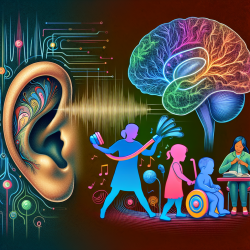Introduction
In the realm of audiology and speech-language pathology, understanding the intricacies of neural hearing loss and its impact on speech processing is crucial for practitioners aiming to enhance therapeutic outcomes. The research article titled Speech Processing Disorder in Neural Hearing Loss by Joseph P. Pillion provides insightful case studies that illustrate the complexity of auditory processing disorders. This blog will explore the findings of the study and discuss how practitioners can apply these insights to improve their clinical practice.
Key Findings from the Research
The research highlights several critical points regarding speech processing disorders in patients with neural hearing loss:
- Normal audiograms do not always predict functional auditory capabilities, especially in everyday listening conditions.
- Electrophysiological tests, such as the auditory brainstem response (ABR), are essential in diagnosing auditory neuropathy/dyssynchrony syndrome (ANDS) and other neural hearing disorders.
- Otoacoustic emissions (OAEs) can indicate normal outer hair cell function but may not accurately reflect the extent of communication difficulties.
- Comprehensive audiological assessments are necessary for diagnosing complex cases where traditional audiograms fall short.
Implications for Practitioners
Practitioners can leverage the findings from this study to refine their diagnostic and therapeutic approaches. Here are some recommendations:
- Utilize Comprehensive Audiological Assessments: Implement a battery of tests, including ABR and OAEs, to gain a holistic understanding of a child's auditory capabilities. This approach is particularly beneficial for children with suspected neural hearing disorders.
- Consider Electrophysiological Testing: ABR testing is invaluable for identifying the neural mechanisms underlying hearing and speech processing deficits. It should be a standard part of the assessment protocol for patients with atypical audiograms.
- Advocate for Early Screening: Encourage the use of ABR screening in neonatal intensive care units (NICUs) to detect ANSD early, especially given its prevalence among NICU graduates.
- Customize Intervention Strategies: Tailor intervention plans based on comprehensive assessments. For instance, preferential seating and FM systems can be beneficial for children diagnosed with unilateral ANSD.
Encouraging Further Research
While the study provides valuable insights, it also underscores the need for ongoing research in the field of neural hearing loss and speech processing disorders. Practitioners are encouraged to engage with current research and contribute to the body of knowledge through clinical observations and case studies.
Conclusion
The research on speech processing disorders in neural hearing loss offers a roadmap for practitioners to enhance diagnostic accuracy and therapeutic outcomes. By integrating comprehensive assessments and evidence-based interventions, practitioners can significantly improve the quality of life for children with auditory processing disorders.
To read the original research paper, please follow this link: Speech Processing Disorder in Neural Hearing Loss.










